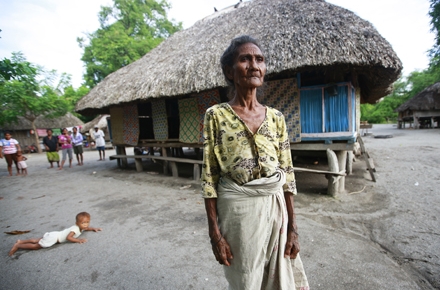In Timor, a new house does not make a home
A failed national housing project demonstrates the difficulties of development in Timor-Leste, write Joanne Wallis and Pyone Myat Thu.
In Timor-Leste 41 per cent of the population lives below the basic needs poverty line, and 58 per cent of communities live in poor housing conditions with no access to clean water and sanitation.
Yet across the country hundreds of brand new prefabricated houses lie vacant.
These houses, the product of the government’s 2011 Millennium Development Goals (MDG) Suco Program, stand as empty testament to the difficulties of development in one of Australia’s nearest neighbours.
The Timor-Leste government has access to significant oil and gas revenues from the Timor Sea, with US$14.6 billion in its sovereign wealth Petroleum Fund.
This money has funded a raft of social security schemes and massive investments in infrastructure. However, the government faces a significant challenge: the oil may soon dry up and the gas flames extinguish; and with it Timor’s pipeline to progress.
Some projections forecast that oil and gas revenues will be exhausted by 2025, with no obvious way to replace them.
The development decisions the government makes in the next few years will be critical to determining whether Timor-Leste has a future as a thriving middle-income state, or whether it declines further in to poverty.
The MDG Suco Program illustrates the difficulties of infrastructure development. Under the program the government awarded a US$144 million contract (later reduced to US$87 million to an Indonesian company to import approximately 9,000 prefabricated houses.
The initial plan was that five of these houses would be erected in every one of Timor-Leste’s 2,225 aldeia (hamlets) and would be occupied by vulnerable members of the community, such as the elderly and disabled, female-headed households and veterans of the resistance to Indonesian occupation.
Fifty-five thousand houses would be built by 2015 in order to help meet Timor-Leste’s MDG targets, with each having solar energy, water and sanitation.
But, the execution of the MDG Suco Program has been poor, with only US$14 million of the US$93 million allocated to it in 2012 being spent. Timor-Leste NGO La’o Hamutuk has described the program as a ‘lost opportunity’, because it used imported rather than local materials and did not support local employment or small businesses.
The program was implemented without the adequate participation of the communities it would target and effect, and there are questions over whether the prefabricated houses are culturally-adequate or sustainable in tropical Timor-Leste. Many of these housing settlements are unoccupied, slowly deteriorating in Timor-Leste’s harsh climate.
Those MDG Suco Program houses that are occupied demonstrate additional challenges.
One settlement in Manatuto District remained unconnected to clean water as of September, despite people relocating onto the site in June 2013. Furthermore, the MDG houses are designed in such a way that household sewage and waste flow out into on-site open drains, which can promote waterborne contamination and diseases, posing greater health implications – particularly for children and the elderly – and environmental damage in the long term.
The majority of rural Timorese families continue to rely on cheap firewood for cooking and the kitchen is typically separated from the main residence. Unsurprisingly, small thatched shelters have been informally constructed behind some houses for this purpose.
Each household only has a small plot of land surrounding their dwelling to grow food. Some families have planted maize, peanuts, and vegetables, but as they wait for their first harvest, they are reliant on larger family fields at a distance for everyday consumption and income. A number of residents raised chickens, and stressed that they were strictly not permitted to keep other livestock such as pigs, goats or cattle in the settlement to maintain hygienic living conditions. Once again, they turned to family relatives who had access to larger plots of land in the main village to rear animals and keep watch over them.
Ironically, by constructing these MDG houses away from local communities, they may do more harm by limiting access to kin relations, livelihood resources and social services to those who need them most. Separating the ‘vulnerable’ from their communities may adversely perpetuate local stigmas associated with physical disabilities and mental health issues. The construction of social housing cannot be conceived merely as a technical feat, but requires a holistic understanding of local livelihoods and social realities.
The difficulties of the MDG Suco Program highlight the challenges that face Timor-Leste. While infrastructure is important to Timor-Leste’s economic development, the government cannot afford for its finite resources to be wasted on poorly conceived and executed programs.
Timor’s housing and development challenges were one of the many issues examined at the two-day Timor-Leste Update conference taking place at The Australian University on 28 and 29 November 2013.
Dr Joanne Wallis and Dr Pyone Myat Thu are from the School of International, Political and Strategic Studies in the ANU College of Asia and the Pacific.







